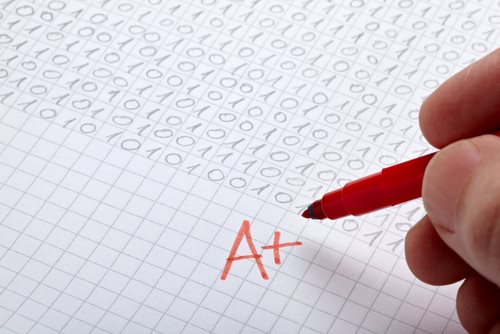Understanding The Importance of Education




What is Education Law?
Education law is a formal set of rules and regulations that were established to guide the workings and goals of a particular education system. The majority of regions in the United States possess a detailed educational law system to create a comprehensive educational policy. Educational law is a comprehensive field that may deal with the creation and funding of schools, the requirements needed to become a teacher, the rights of the students, and overall school policy.
As a result of the importance of education and the mechanisms needed to institute a suitable educational system, the framework requires an established legal code to operate under. Education is viewed as a fundamental aspect of society; through the instillation of basic knowledge and skills such as reading, science, writing, and mathematics the education system helps produce knowledgeable workers who are primed for additional training in a specialized field.
In turn, this system helps create a more skilled workforce that can benefit not only the economy, but society as a whole. For these reasons, governing bodies (on the federal and local levels) have developed education law to regulate and deliver a sound system to ensure the delivery of proper funding as well as suitable teaching professionals.
Basic forms of educational law will create a compulsory education system. Such a system requires that children attend school through a certain age or for a specific period of time. For example, in the United States, education is compulsory through the age of 18, although each state will adopt their own interpretation in regards to length requirements.
In addition to the time parameters established through educational law, the field can also dictate the standards and practices of the underlying teaching professionals. Such a system will institute provisions or requirements that will elucidate on what is the appropriate course for hiring teachers, as well as their appropriate wages and protocol.
Educational law will also institute policies and practices used to evaluate teaching methods. This field within educational law is controversial; however, it is a necessary function to maximize the efficiency of the educational system. Some believe teachers or education as a whole should be evaluate based on the academic performance of students, while others contend that such a method will deliver fraudulent results based on the skewed socioeconomic numbers of different regions in the united States.
Every state in the United States possesses a department of education. These agencies were created to deliver and evaluate the education system in their particular area. Matters concerning effectiveness, funding, teaching methods, evaluation practices and the general well-being of the educational system are evaluated and acted upon accordingly. In a broader sense, the federal government of the United States also possesses a Department of Education that attempts to accomplish the same goals, only on a national level.


What is Adult Education?
Adult education refers to the practice of teaching and educating adults. Adult education, in most jurisdictions, is delivered in the work environment, through an extension of an academic institution or school of continuing education. In addition to the workplace, other environments which promote or offer adult education are community colleges, folk high schools and lifelong learning centers.
The practice of Adult Education is typically referred to as a “Training and Development” medium and is often associated with professional or work-related development. Adult education is held separate from vocational education, which predominantly focuses on the teaching of a workplace-based skill, as a result of the more general implications.
In addition, adult education is also held in contrast from non-formal adult education, which includes learning skills or the delivery of resources to improve or augment personal development.
Characteristics of Adult Education:
Adult education programs can take the form of numerous classroom or educational settings. For instance, adult education programs may provide one to one tutoring and small group sessions for individuals who possess 6th grade or below educational levels. Public libraries, various school systems and some non-profit organizations are the typical institutions that provide these environments throughout the country.
These programs, including various educational centers and community colleges, will receive grants from Welfare and Unemployment departments to deliver their training to those individuals who are recipients of welfare and unemployment.
These adult education providers help these individuals gain life and work skills in order to facilitate their return to working society. In addition to those individuals receiving government assistance, adult education programs are also made available to ex-offenders for the purpose of expediting their assimilation into society.
How does an Adult Education program differ from other types of Educational Institutions?
The process of educating adults will differ from educating children in a number of ways. Arguably the most important difference is that adults already possess an accumulated level of knowledge, both in the form of institutionalized educational programs and the knowledge they have gathered from their respective work experience.
In addition to the presence of an already established foundation of knowledge, another difference between adult education programs and child-based educational systems is that the majority of adult education is voluntarily. As a result of this characteristic, the majority of students who participate in adult education programs are self-motivated.
Adults, participating in adult education programs, will typically apply their knowledge in a practical fashion to learn in an effective fashion. Adults participating in these programs utilize a reasonable expectation that the knowledge gained will help them further their societal-based and employment goals.
The typical stereotype attached to adult education programs, specifically in the United States, is that of the high-school dropout who opts to return to school in order to complete general education requirements. Although this is a common form of adult education, is not to be taken for the singular form of adult education.
A fast-growing sector of adult education is English for Speakers of Other Languages; these courses are vital in assisting immigrants with only the acquisition of the English language, but also the acclimation process to the general culture of the United States. If you feel you are not learning the skills you sought out to contact an education lawyer to consult your case.


What is the Department of Education?
The United States Department of Education, also known as the ED, is a governmental organization and Cabinet-level department of the United States Federal Government.
The United States Department of Education, which was created by the Department of Education Organization Act and was signed into law by President Jimmy Carter on October 17, 1979—the United States Department of Education began to officially operate on May 16, 1980.
The Department of Education Organization Act officially divided the Department of Health, Education and Welfare into more segmented departments, including the Department of Education and the Department of Health and Human Services. When the modification was finalized, the Department of Education is administered by the United States Secretary of Education. Although the Department of Education is a full-functioning and funded governmental organization, it remains the smallest Cabinet-level department, with roughly 5,000 employees.
Functions of the Department of Education:
The most notable functions of the Department of Education, according to the organization’s mission statement, is to “establish policy for, administer and coordinate most federal assistance to education, collect raw data on schools in the United States and to enforce federal educational laws regarding privacy and civil rights.” The Department of Education, as a government body of the Federal Government, is not permitted nor attempts to, establish schools or colleges throughout the country.
Unlike the educational systems of other nations, education in the United States of America is decentralized (the school systems are funded and run on a local level). The federal government and its coordinating Department of Education, in the United States, is not primarily involved in determining educational standards or curricula—although this role has been augmented through the passing of the No Child Left Behind Act.
Following the passing of this legislation, the function of providing a curricula and establishing educational standards has been left to state and local school districts; if a local school system decides it needs aid in developing a curricula or funding, the federal government and more specifically the Department of Education, will act as an intermediary to bolster the school’s effectiveness. In general, however, the quality and effectiveness of an educational institution and their coordinating degrees is primarily maintained through an informal private process known as accreditation.
This process is implemented and maintained by the local school district itself; in accreditation, the Department of Education has no direct public jurisdictional control. In general, as a government body, the Department of Education aims to promote student achievement and the preparation for global competitiveness by fostering educational excellence and ensuring equal access. If you need legal advice and assistance, contact an education lawyer.

